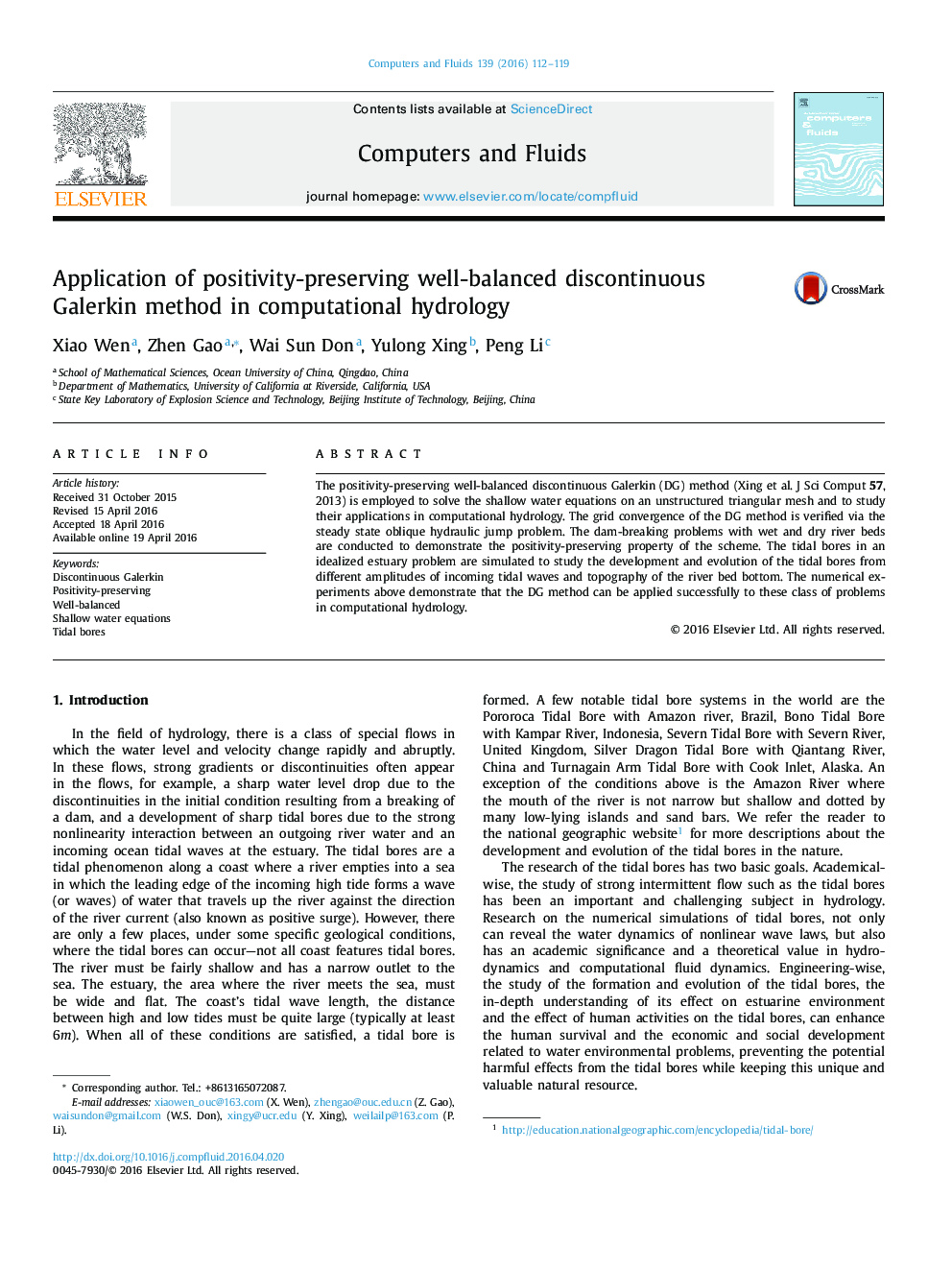| کد مقاله | کد نشریه | سال انتشار | مقاله انگلیسی | نسخه تمام متن |
|---|---|---|---|---|
| 5012081 | 1462672 | 2016 | 8 صفحه PDF | دانلود رایگان |
- The shallow water equations are solved by the positivity-preserving DG method.
- The dam breaking into wet and dried river beds are simulated.
- The tidal bores in an idealized estuary model are simulated.
The positivity-preserving well-balanced discontinuous Galerkin (DG) method (Xing et al. J Sci Comput 57, 2013) is employed to solve the shallow water equations on an unstructured triangular mesh and to study their applications in computational hydrology. The grid convergence of the DG method is verified via the steady state oblique hydraulic jump problem. The dam-breaking problems with wet and dry river beds are conducted to demonstrate the positivity-preserving property of the scheme. The tidal bores in an idealized estuary problem are simulated to study the development and evolution of the tidal bores from different amplitudes of incoming tidal waves and topography of the river bed bottom. The numerical experiments above demonstrate that the DG method can be applied successfully to these class of problems in computational hydrology.
Journal: Computers & Fluids - Volume 139, 5 November 2016, Pages 112-119
